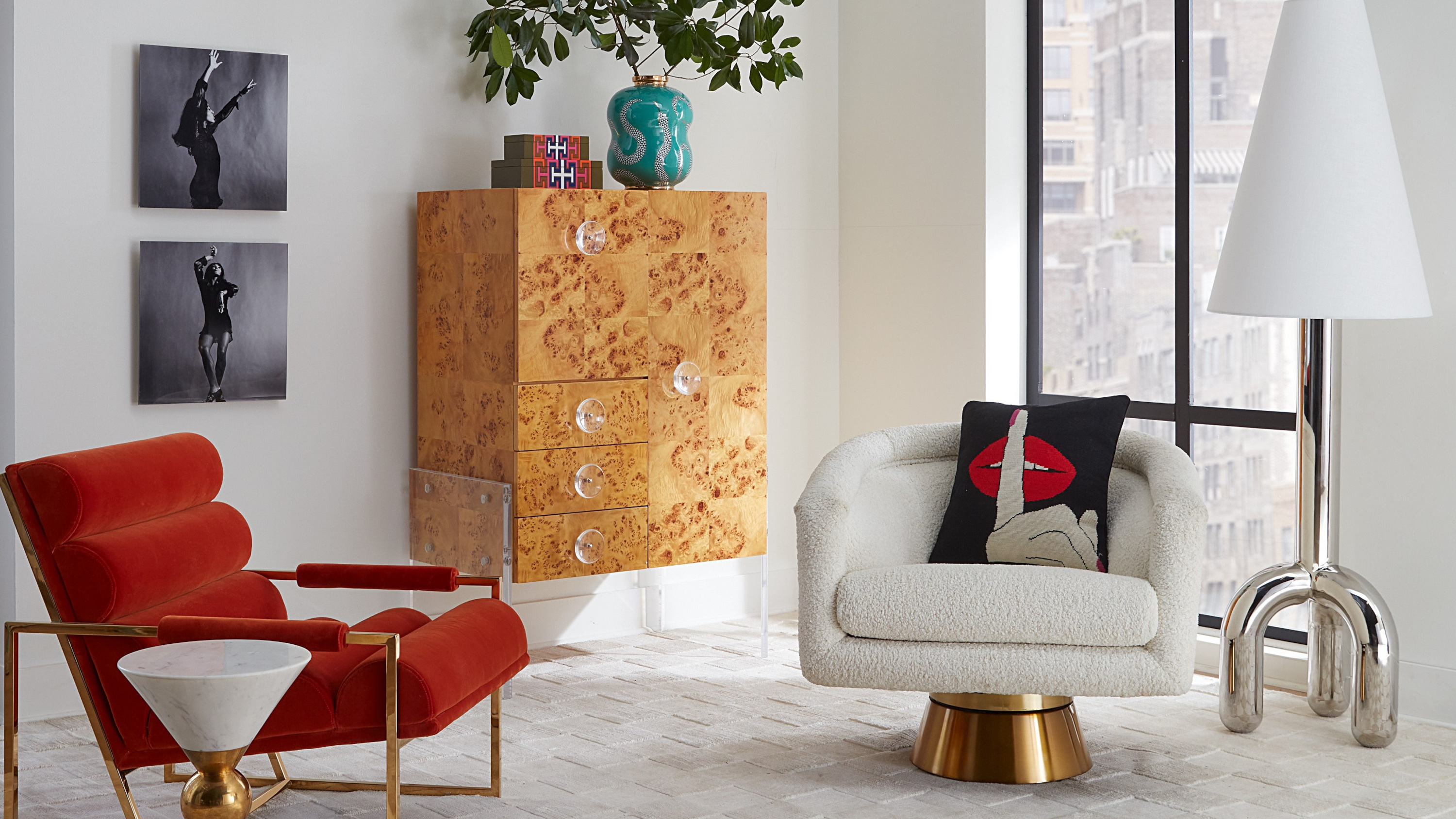
Whether you're cutting back on expensive nights out or just love to host, in the last few years, more of us are looking to entertain at home come Friday nights – and the cocktail corner is the perfect way to do it. Fun, versatile and luxe, the concept is making its way into plenty of residential projects by high-end designers – and the good news is it's easy to replicate at home, too.
A little more formal than a lounge but more casual than a dining room, a cocktail corner is designed to replicate the experience of your favorite cocktail bar from the comfort of your home – so as well as having all the drinks-making equipment you expect from a home bar, it also needs to include interior design elements like plush, comfortable seating, thoughtful lighting and luxe accessories.
We spoke to some interior designers about their favorite ways to use cocktail corners in their projects – and got plenty of tips on how to make this look work for you.
What are the essentials for a cocktail corner?
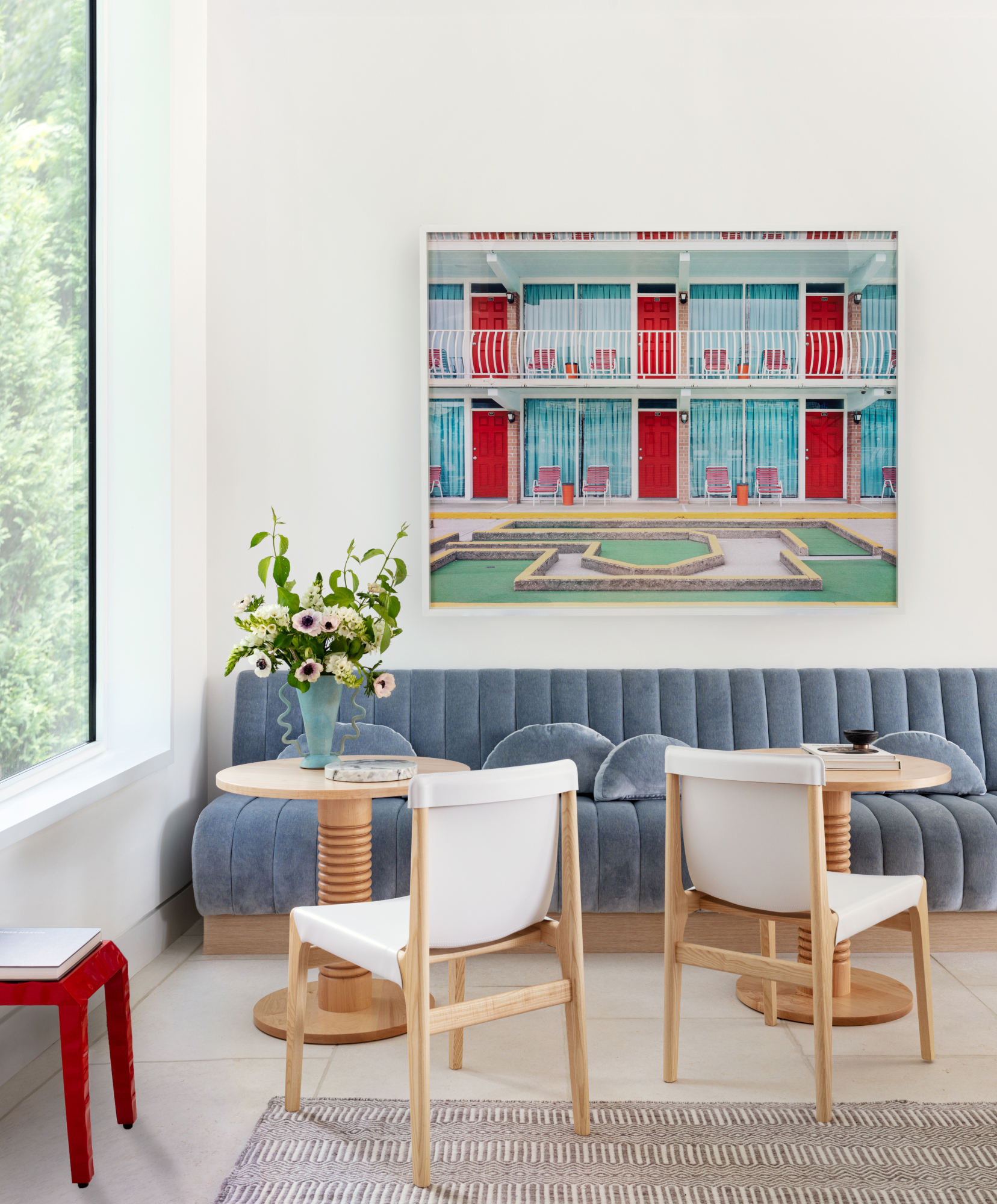
‘In order to create a fully functional cocktail corner, a few key elements are imperative,’ says Malone Detro of San Francisco design studio MALONE. ‘First and foremost, the location needs to be in an area that is inviting and accessible – you have to want to hang out in this area even if it is not in the most obvious room of the house.’
Once you’ve found that ideal space – be it a corner of a lounge, a nook in a dining room, or a full room of its own – focus on the seating. ‘I like seating that encourages people to come together and linger,’ says New York interior designer Lucy Harris. ‘It should feel comfortable and casual, so you’re not sitting up straight as you would at a dining table. It should be a beautiful shape with a soft texture that makes you want to sit down and settle in.
'I like to mix different kinds of seating areas: bar seating, hang-out seating at a sofa and banquette seating, if there is space for it. We tend to use soft, natural materials like mohair, bouclé, wool and velvet because they feel cozier and more human, more intimate.’
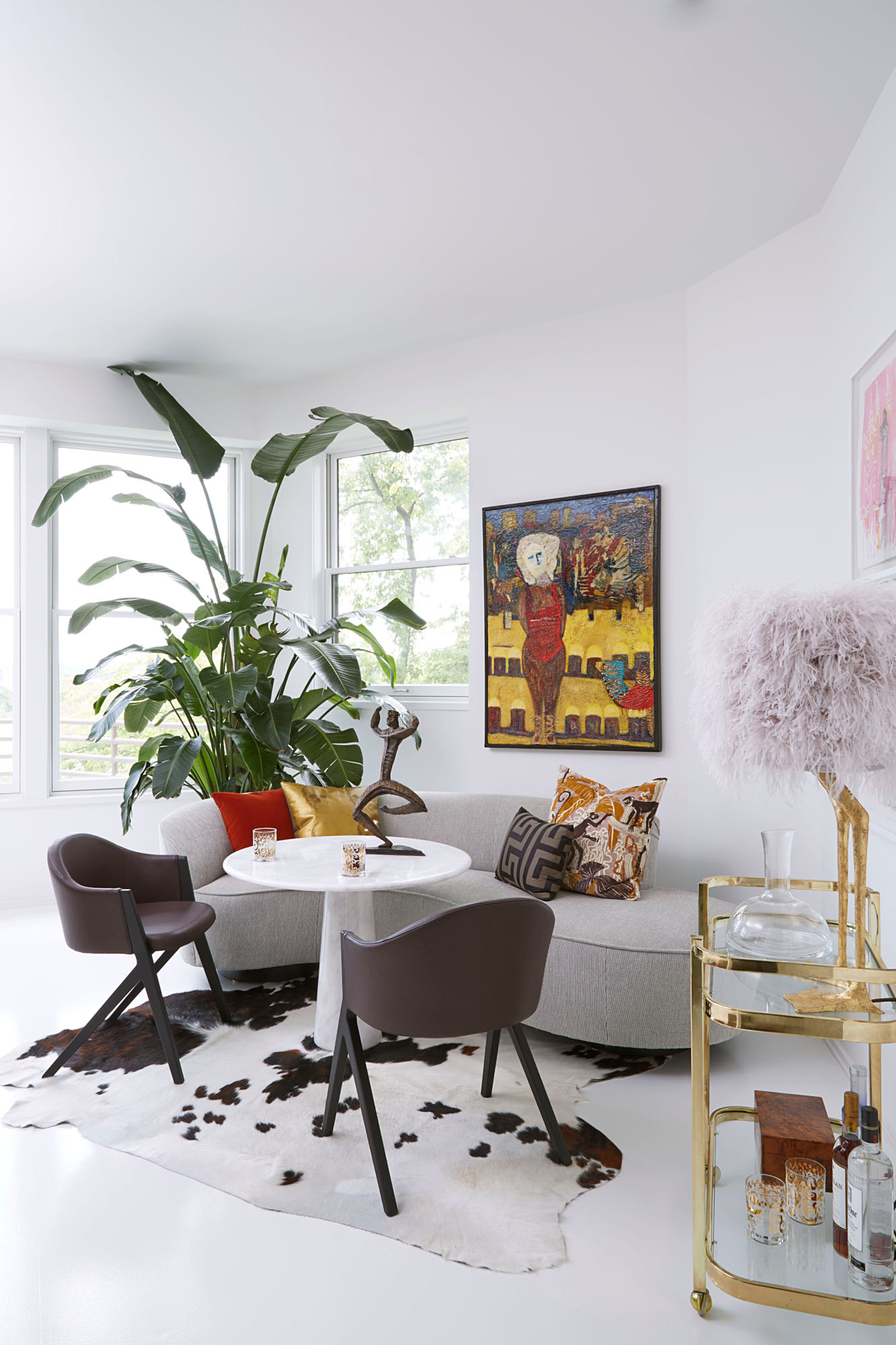
Cozy lighting is also key: this is no place for the big light. ‘Beautiful lighting fixtures that cast a soft, flattering light is essential,’ adds Lucy. Opt for wall sconces in muted brass or a pearlescent finish for a retro feel; table and floor lamps can also create pools of gentle light. And you can always use warm-toned LED strip lighting to highlight, for example, a bar cabinet. ‘Elegant lighting fixtures or LED strips enhance the glamorous ambiance without taking up precious space,’ explains Todd Falconbury, principal interior designer at Atlanta-based Musso Design Group.
And of course, no cocktail corner is functional without a bar – or at least a bar cart. ‘The other essential elements are the items needed to make a full cocktail: glassware, bottle openers, mixers,’ says Malone Detro. ‘Finding a way to store and display these elements allows the user to truly get that escape they're after.’ At the higher end of the design spectrum, this means a fully functioning bar built into the space – but a bar cabinet or cart is practical and stylish for smaller spaces.
How can I make a cocktail corner feel luxe?
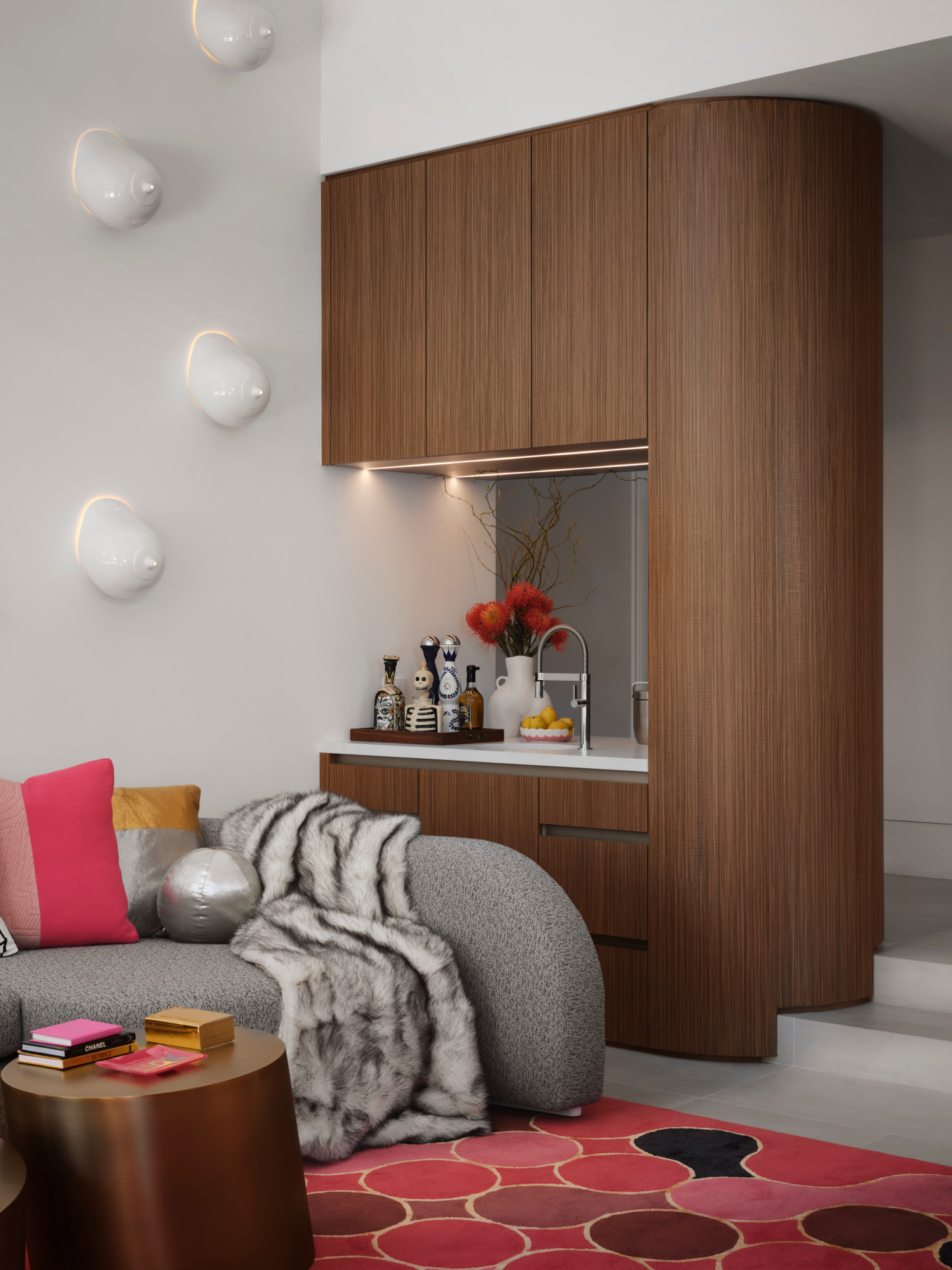
Essentially, it’s all about the materials you incorporate into your scheme. ‘Rugs with soft fibers are a great way to create a warm feeling and an elegant mood,’ says Lucy Harris. ‘For the banquette [of our Scarsdale Pool House, pictured top], we used velvet because it can go from day to night, and the soft texture feels luxurious and cozy. Beautiful materials, like metals or marbles or woods, act as a conversation piece. We like to use colors and textures that feel special or make you feel happy every time you use it.’
Stone is also a great material to draw upon. For Malone Detro, SHOW1, the studio’s first foray into showcase houses [pictured below], sees richly patterned marble form the basis of the scheme. ‘The original elements of the 1920s Spanish Mediterranean home served as the design catalyst for the space – the original mahogany carved door and stained glass window naturally catch the eye of any passerby,’ Malone explains. ‘We brought in natural stained walnut in an undulating pattern for the display shelving, backlit Patagonia marble for the bar top and face that cantilevers at one end to house two spokeshaved sycamore stools. The space was designed to feel like this hidden jewel within the home; if you are lucky enough to find it, you are rewarded with a drink and a moment of peace.’
The walls and ceiling of Malone's cocktail corner were treated with a plum limewash – an instant way to deliver warmth and an example of how color also works to create a sense of luxury. ‘To create mood using color, we love using blues and grays for cool tones, and moss green, terracotta and ochre for warm tones,’ says Lucy Harris.
How can I incorporate a cocktail corner into a small space?
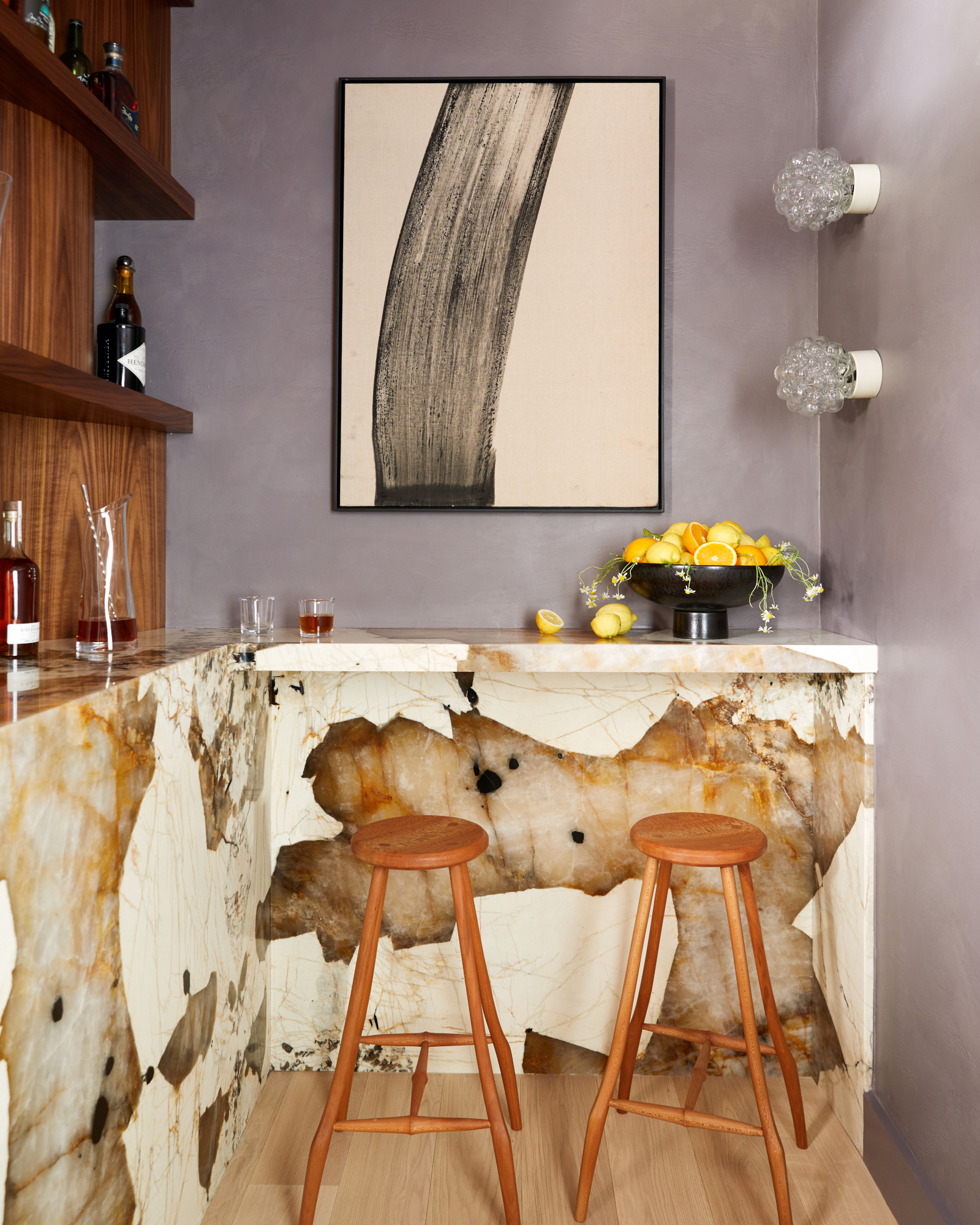
Of course, not all of us have a spare room or basement conversion ready to dedicate to a cocktail corner – but there are clever ways to bring the idea into any available corner of your home. ‘[In another project], we had a small wet bar built between the billiards area and the living room area in an open floor plan,’ says Lucy Harris. ‘It meant sacrificing additional living room seating, but for this client it was a priority. To distinguish it from the other areas, we used a dramatic slab of thick marble at the bar, richly colored wood for the base and a mirrored backsplash that reflects the natural beauty of the ocean outside.’
‘The key to working with smaller spaces is to find ways to enhance the feeling of space within it,’ says Malone Detro. ‘A space filled with nooks and shadows is destined to feel more cramped than a space that maintains voluminous shapes and purposeful pieces. "Less is more" is an ever-present teaching that can certainly be applied in these circumstances. This does not mean you have to choose sterile elements devoid of pattern and color; it means you need to be thoughtful in your selections in order to breathe brightness and allure into the space.’
‘Introducing a cocktail corner in smaller spaces or doubling up on room functionality requires thoughtful planning,’ says Todd Falconbury. ‘Opt for furniture that serves dual purposes, such as a bar cart that can also function as a side table or storage. This maximizes space while keeping the cocktail corner versatile. Utilize vertical space with wall-mounted shelves for liquor, glassware, and bar tools. Pay attention to small details like stylish coasters, elegant napkins, or a polished ice bucket – these details contribute to a luxe atmosphere without requiring much space. By combining functionality with these design elements, you can create a cocktail corner that feels both glamorous and suitable for everyday use, even in smaller spaces.’







